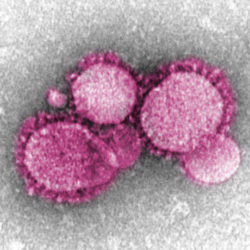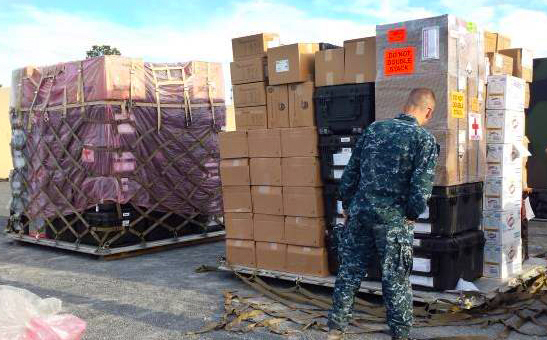Coronavirus in the Time of Climate Change
- 20.03.2020
- Author:admin
- (0) Comment
- 691

In 2015, ASP wrote about the ways climate change was altering infectious disease vectors. Five years later, the threat from infectious disease is on everyone’s mind. While there isn’t a causal link between climate change and CoVID-19, climate change is affecting transmission patterns of infectious diseases.
First, warmer global temperatures have profound implications for the spread of infectious diseases. Longer summers and shorter winters mean that disease vectors, like mosquitos, will thrive in new places and reproduce year-round in others. The expansion of the geographic range for mosquitos alone could expose a billion more people to viral infections like malaria in the coming century. Bacteria also thrives in warmer temperatures, increasing opportunities for infection. Additionally, heat puts more stress on the human body and weakens the immune system, making people more susceptible to viruses and bacterial infections.
Second, climate change is altering the physical and ecological landscape. As habitats disappear or degrade, as a result of climate change, wild animals will move into human settlements in search of food and shelter. Increasingly frequent interactions between wild animals, humans, and livestock creates new opportunities for a novel pathogen to infect people. Many recent outbreaks, liked SARS, MERS, Swine Flu (H1N1), and Avian Flu (H5N1), have been linked to interactions between humans and animals. CoVID-19 likely originated from human-animal interactions at an outdoor “wet market” in China, where people buy and sell live animals.
Finally, disasters like coastal flooding, devastating typhoons, and extreme wildfires will displace hundreds of millions, if not billions, of people in the coming decades. In the aftermath of a natural disaster, many displaced people may elect to migrate in search of new homes, jobs, and food. Climate refugees have the potential to spread disease on their travels through crowded camps and transportation systems, infecting others along the way. The first response to natural disasters is often to send military and civilian aid workers, but those people can also potentially become vectors, bringing pathogens back home with them.
It’s easy to forget that pathogens are living organisms, changing unpredictably and adapting to climate change remarkably well. They’ve turned disaster zones into breeding grounds, animals into unwitting allies, and climate change into an unprecedented opportunity. The next pandemic is coming. Climate change may accelerate when the next pandemic happens. After the panic surrounding CoVID-19 has subsided, we must take stock of lessons learned and better prepare for next time.
Threat of Disease could Rise with Climate Change
Published: January 7, 2015 by Philip Rossetti
As global temperatures rise, disease vectors are changing. While it is still too early to predict how bad future disease patterns will be, the WHO claims that, “changes in infectious disease transmission patterns are a likely major consequence of climate change.” According to the EPA, climate change is likely to increase the number of cases of diseases related to air temperature (such as food-borne bacterial infections), and also will likely increase the activity of animals which can carry infectious diseases (ticks, mosquitoes, etc.). Furthermore, extreme weather events and environment degradation creates refugee flows, which often spreads disease (especially so when refugees are confined to camps). As the prevalence of infectious diseases is likely to increase with rising temperatures, this will bring about a key change to the security environment and the threats that the U.S. will be dealing with in the future.
In September the U.S. committed 3,000 troops to help deal with the Ebola epidemic of West Africa by constructing treatment centers and hospitals, not surprising since it was expected to be a serious regional threat. As the prevalence of infectious diseases (particularly in poor countries which lack infrastructure to combat infection) rises, it is likely that we will see more relief missions of this nature in the future. The U.S. mission to fight Ebola marks what could be an increasing need for training and preparedness on the part of the U.S. military to deploy troops in environments where disease poses a significant risk.
Even though the U.S. will need to devote more resources and effort to combat diseases in the 21st century, the risk that disease can pose to military capacity should not be neglected either. It is a common story in history where the fighting capacity of a force can become severely diminished due to disease. Despite precautions, there is no guarantee that the U.S. military is invulnerable to such concerns. Whether the mission is combat or humanitarian in nature, the U.S. military would be wise to adapt its protocol and procedures to better take into account the increased risk that disease will pose to military operations of the future, especially as part of the U.S. military’s roadmap to dealing with climate change. As the security environment changes to reflect the effects of climate change, so too must our military adapt to operate at its peak in a challenging
Source :https://www.americansecurityproject.org/threat-of-disease-will-rise-with-climate-change/?mc_cid=04d625ca0d&mc_eid=93efd6d1e0




















































Share Your Comments
Only members can comment, Click here to sign up for free right now